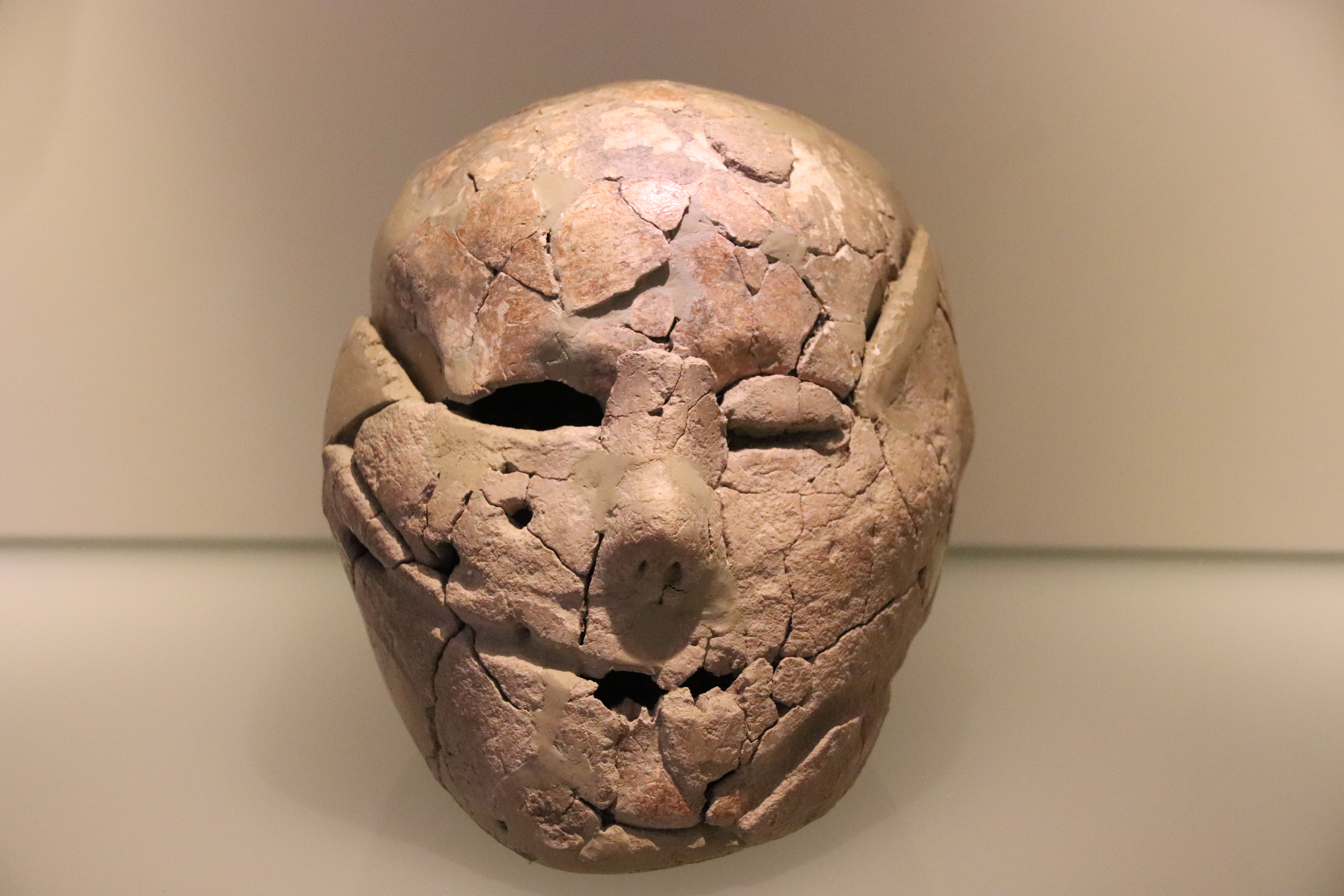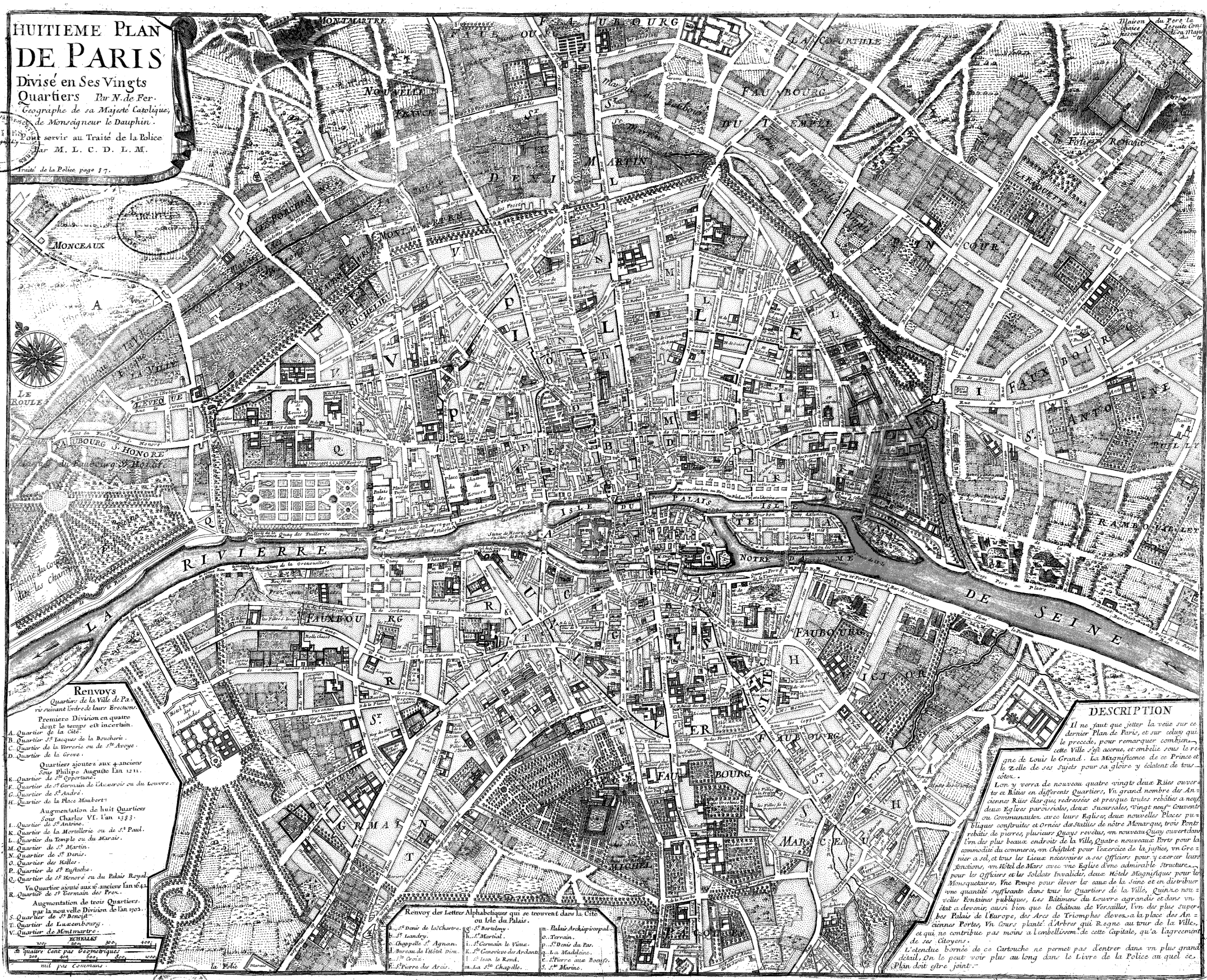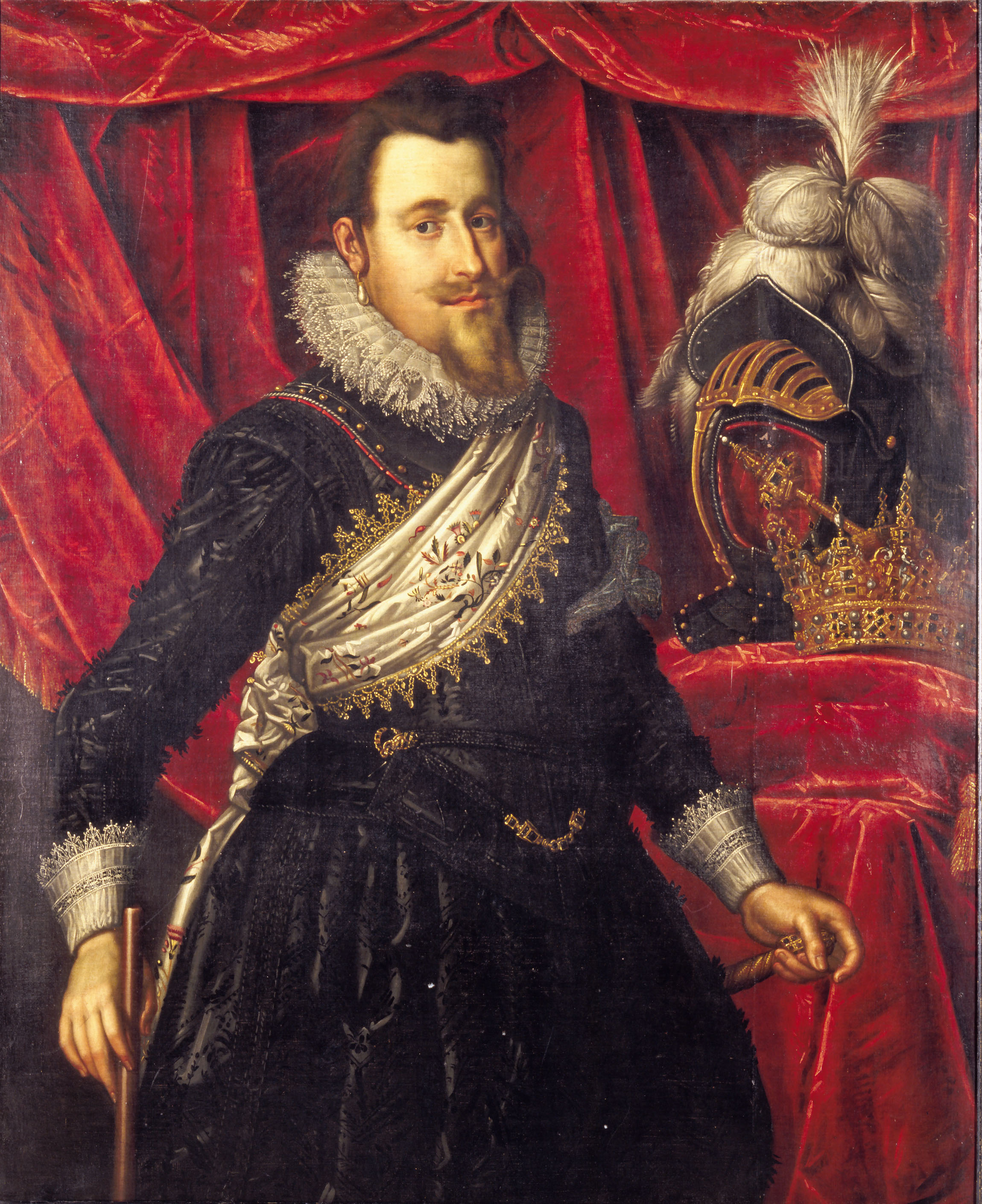|
Charles D'Angennes
Charles d'Angennes, marquis de Rambouillet (1577 - Paris, 26 February 1652) was a French noble and diplomat. Biography He was the only son of Nicolas d'Angennes and Julienne d'Arquenay. He became lord then marquis of Rambouillet (1612) and Pisani, Baron de Talmont, Lord of Arquenay, Vidame & Sénéchal du Mans, captain of the 2nd company of the Hundred Gentlemen of the Household of the King. In 1610 he was appointed Grand Master of the King's Wardrobe and a Knight in the Order of the Holy Spirit (1619). He was also State Councilor, Colonel-General of the Italian Infantry (1620) and Maréchal de camp (1620). Appointed Ambassador of France to Italy, he negotiated in 1614 and then in 1615, during the War of the Montferrat Succession, the first and second peace treaties between Louis XIII and the Duke of Savoy. In 1627 he was sent as extraordinary ambassador to Piedmont and Spain. Marriage and children He married in 1600 with Catherine de Vivonne, who became an important soci ... [...More Info...] [...Related Items...] OR: [Wikipedia] [Google] [Baidu] |
Portrait Of Charles D'Angennes (1577-1652)
A portrait is a painting, photograph, sculpture, or other artistic representation of a person, in which the face and its expressions are predominant. The intent is to display the likeness, personality, and even the mood of the person. For this reason, in photography a portrait is generally not a snapshot, but a composed image of a person in a still position. A portrait often shows a person looking directly at the painter or photographer, in order to most successfully engage the subject with the viewer. History Prehistorical portraiture Plastered human skulls were reconstructed human skulls that were made in the ancient Levant between 9000 and 6000 BC in the Pre-Pottery Neolithic B period. They represent some of the oldest forms of art in the Middle East and demonstrate that the prehistoric population took great care in burying their ancestors below their homes. The skulls denote some of the earliest sculptural examples of portraiture in the history of art. Historical portraitur ... [...More Info...] [...Related Items...] OR: [Wikipedia] [Google] [Baidu] |
Nicolas D'Angennes
Nicolas d'Angennes, sieur de Rambouillet ( –) was a French noble, governor, diplomat and soldier during the French Wars of Religion. The son of Jacques d'Angennes and Isabelle Cottereau, Rambouillet rose fast during the civil wars. In 1568, he was made a chevalier de l'Ordre de Saint-Michel and governor of Maine. In this period he served as a diplomat for the French crown, being given a mission to travel to England. With Anjou, the brother of the king's, election as king of the Commonwealth in 1573, he was dispatched as Anjou's ''vice-roi'' to the Commonwealth court in Kraków to thank the senate for his election, and prepare the way for his lord. Upon Anjou's arrival, he would be selected (alongside Retz) as the main conduits between the French court in the country and the local aristocracy. Tiring of the court, he departed back to France, only to again find himself on a mission to the Commonwealth, to inform Anjou that he was now king of France. The new king, now styling ... [...More Info...] [...Related Items...] OR: [Wikipedia] [Google] [Baidu] |
Order Of The Holy Spirit
, status = Abolished in 1830 after the July RevolutionRecognised as a dynastic order of chivalry by the ICOC , founder = Henry III of France , head_title = Grand Master , head = Disputed:Louis Alphonse, Duke of AnjouJean, Count of Paris , lower = Order of Saint Michael , image2 = , caption2 = Ribbon of the Order The Order of the Holy Spirit (french: Ordre du Saint-Esprit; sometimes translated into English as the Order of the Holy Ghost), is a French order of chivalry founded by Henry III of France in 1578. Today, it is a dynastic order under the House of France. It should not be confused with the Congregation of the Holy Ghost or with the religious Order of the Holy Ghost. It was the senior chivalric order of France by precedence, although not by age, since the Order of Saint Michael was established more than a century earlier. Although officially abolished by the government authorities in 1830 following the July Revolution, its activities carried on. It is still re ... [...More Info...] [...Related Items...] OR: [Wikipedia] [Google] [Baidu] |
Maréchal De Camp
''Maréchal de camp'' (sometimes incorrectly translated as field marshal) was a general officer rank used by the French Army until 1848. The rank originated from the older rank of sergeant major general (French: ''sergent-major général''). Sergeant major general was third in command in an army, after the general and the lieutenant general. One of his tasks was to dispose the troops on the battlefield. It was also known in the French army as the "battle sergeant" (fr: ''sergent de bataille''). In English-speaking countries, the rank of sergeant major general became known as simply major general. Background and history The ''maréchal de camp'' rank was the junior of the two officer general ranks of the French Army, the senior being lieutenant general. The rank of brigadier was intermediate between those of colonel and ''maréchal de camp'', but was not considered a general officer rank. Nevertheless, when rank insignia were introduced in the 1770s, the brigadier insignia was o ... [...More Info...] [...Related Items...] OR: [Wikipedia] [Google] [Baidu] |
War Of The Montferrat Succession
The War of the Montferrat Succession (Italian: ''Guerra di successione del Monferrato'') was a war of succession from 1613 to 1617 over the Duchy of Montferrat in northwestern Italy. The direct cause of the conflict was the death of duke Francesco IV Gonzaga of Montferrat and Mantua on 22 December 1612 without male heirs. His brother Ferdinando Gonzaga was a cardinal, but renounced his ecclesiastical career in order to succeed his brother in both the Duchy of Mantua and the Duchy of Montferrat. However, Francesco's wife Margaret of Savoy was the daughter of duke Charles Emmanuel I of Savoy, who claimed Montferrat now fell to his dynasty. Charles Emmanuel invoked the treaty of 1 May 1330 on the occasion of the marriage of Yolande Palaeologina of Montferrat, daughter of Theodore I, Marquess of Montferrat, and Argentine Spinola, with Aymon, Count of Savoy. The treaty stipulated that when the male descendants of the marquis of Montferrat went extinct, those of Yolande (and thu ... [...More Info...] [...Related Items...] OR: [Wikipedia] [Google] [Baidu] |
Catherine De Vivonne, Marquise De Rambouillet
Catherine de Vivonne, marquise de Rambouillet (1588 – 2 December 1665), known as Madame de Rambouillet, was a society hostess and a major figure in the literary history of 17th-century France. {{French literature sidebar Life Born in Rome, she was the daughter and heiress of Jean de Vivonne, marquis of Pisani, and Giulia Savelli, who belonged to a noble Roman family. She was married at the age of twelve to Charles d'Angennes, ''vidame du Mans'', and in 1612, ''marquis de Rambouillet''. They had seven children, two sons and five daughters. The young, beautiful and witty marquise found the coarseness and intrigues of the French court little to her taste and, in 1620, she began to gather around her the circle that gave its renown to her salon. She and her husband had taken residence in Paris at the Hôtel Pisani, later renamed ''Hôtel de Rambouillet'', and which she restored between 1618 and 1620. It was situated ''rue Saint-Thomas-du-Louvre'', between the Louvre and the Tuileri ... [...More Info...] [...Related Items...] OR: [Wikipedia] [Google] [Baidu] |
Julie D'Angennes
Julie d'Angennes, Duchess of Montausier (1607 - 15 November 1671) was a French courtier. She served as royal governess of Louis, Grand Dauphin in 1661–1664, and ''Première dame d'honneur'' to the queen of France, Queen Marie Thérèse, from 1664 until 1671. She was the ''duchesse de Montausier'' by marriage. Life Julie d'Angennes was the daughter of Charles d'Angennes, Marquis of Rambouillet and Catherine de Vivonne, "''marquise de Rambouillet''". She played an important role in the famous literary salon of her mother, where she was referred to as ''Princess Julie'' and was celebrated as a muse to writers and poets for her beauty and wit. She married Charles de Sainte-Maure, Duke of Montausier in 1645. Court career In 1661–1664, she was governess to the dauphin. In 1664, she was appointed ''Première dame d'honneur'' to the queen. In this position, she is known for the complaisant role she played in assisting the king and his mistresses, though she officially stated her ... [...More Info...] [...Related Items...] OR: [Wikipedia] [Google] [Baidu] |
Première Dame D'honneur
''Première dame d'honneur'' ('first lady of honour'), or simply ''dame d'honneur'' ('lady of honour'), was an office at the royal court of France. It existed in nearly all French courts from the 16th-century onward. Though the tasks of the post shifted, the dame d'honneur was normally the first or second rank of all ladies-in-waiting. The dame d'honneur was selected from the members of the highest French nobility. History The office was created in 1523. The term Dame d'honneur has also been used as a general term for a (married) French lady-in-waiting. Initially, the married ladies-in-waiting who attended the queen of France had the title Dame. This was simply the title of a married lady-in-waiting, who was not the principal lady-in-waiting. From 1523, the group of 'Dame', (married) ladies-in-waiting who attended the court as companions of the queen had the formal title Dame d'honneur ('Lady of Honour', commonly only 'Dame'), hence the title 'Première dame d'honneur' ('Fir ... [...More Info...] [...Related Items...] OR: [Wikipedia] [Google] [Baidu] |
Charles De Sainte-Maure, Duc De Montausier
Charles de Sainte-Maure, duc de Montausier (6 October 161017 November 1690), was a French soldier and, from 1668 to 1680, the governor of the dauphin, the eldest son and heir of Louis XIV, King of France. Biography Charles was born on 6 October 1610, the second son of Léon de Sainte-Maure, baron de Montausier. His parents were Huguenots, and he was educated at the Protestant Academy of Sedan under Pierre Du Moulin. He served brilliantly at the siege of Casale in 1629. Becoming baron de Montausier at the death of his elder brother in 1635, he was the recognised aspirant for the hand of Julie d'Angennes, the eldest daughter of the marquis and marquise de Rambouillet. Having served under Bernard of Saxe-Weimar in Germany in 1634, he returned to the French service in 1636, and fought in the Rhenish campaigns of the following years. He was taken prisoner on 25 November 1643 after the defeat of the French forces under the command of Josias von Rantzau in the Battle of Tuttlingen. ... [...More Info...] [...Related Items...] OR: [Wikipedia] [Google] [Baidu] |
Battle Of Nördlingen (1645)
The second Battle of Nördlingen (or Battle of Allerheim) was fought on August 3, 1645 southeast of Nördlingen near the village of Alerheim. France and its Protestant German allies defeated the forces of the Holy Roman Empire and its Bavarian ally. Prelude The Imperials and their main German ally Bavaria were facing increasingly severe pressure in the war from the French, Swedes and their Protestant allies and were struggling to prevent a French attempt to advance into Bavaria. Geography The 16,000-man Imperial-Bavarian army, led by Field Marshal Franz Baron von Mercy and Johann von Werth entrenched on rising ground near the village of Alerheim, 10 km southeast of Nordlingen. One km to the northeast of the village, the ridge rises to a height called the Wennenberg. Exactly 1 km to the southwest of the village is the Schloss Alerheim, which crowns a hill. Mercy and Werth deployed their right wing on the Wennenberg, anchored their left wing on the ''schloss'' (castl ... [...More Info...] [...Related Items...] OR: [Wikipedia] [Google] [Baidu] |
François Adhémar De Monteil, Comte De Grignan
François Adhémar de Monteil, comte de Grignan (15 September 1632 – 30 December 1714) was a French aristocrat, remembered chiefly for being Lieutenant-Governor of Provence and the beloved son-in-law of Madame de Sévigné. Life and career François de Castellane-Ornano-Adhémar de Monteil de Grignan was born in the Provençal village of Grignan in 1632. He was the eldest of 11 children. At the death of his father, on 4 August 1668, he inherited the title of Count of Grignan. While still young, he engaged upon a military career. In 1654, he became colonel of the Champagne Regiment. Two years later, he became Capitaine-Lieutenant of the soldiers of the Household Cavalry of Queen Anne. He was married three times, first to Angélique-Claire d'Angennes, daughter of the Marquis de Rambouillet. They had two daughters, then Angélique died in 1665. One year later, Grignan married Marie-Angélique du Puy-du-Fou, who died shortly after giving birth to a son, who died in infa ... [...More Info...] [...Related Items...] OR: [Wikipedia] [Google] [Baidu] |
1577 Births
__NOTOC__ Year 1577 ( MDLXXVII) was a common year starting on Tuesday (link will display the full calendar) of the Julian calendar. Events January–June * January 9 – The second Union of Brussels is formed, first without the Protestant counties of Holland and Zeeland (which is accepted by King Philip II of Spain), later with the Protestants, which means open rebellion of the whole of the Netherlands. * March 17 – The Cathay Company is formed, to send Martin Frobisher back to the New World for more gold. * May 28 – The ''Bergen Book'', better known as the ''Solid Declaration'' of the Formula of Concord, one of the Lutheran confessional writings, is published. The earlier version, known as the ''Torgau Book'' (1576), had been condensed into an ''Epitome''; both documents are part of the 1580 ''Book of Concord''. July–December * July 9 – Ludvig Munk is appointed Governor-General of Norway. * September 17 – The Treaty of Berger ... [...More Info...] [...Related Items...] OR: [Wikipedia] [Google] [Baidu] |


.jpg)

